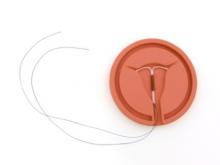In an editorial comment accompanying the report, Dr. Karl Ulrich Petry wrote that "the superficial trauma associated with loop insertion might occasionally result in complete destruction of tiny [cervical intraepithelial neoplastic] lesions located in the external ostium of the cervical canal, but as a colposcopist, I doubt that this mechanical effect can explain the observed significant reduction in cancer risk" (Lancet Oncol. 2011 Sept. 13 [doi:10.1016/S1470-2045(11)70223-8]).
"Instead, I postulate that the tissue trauma associated with loop insertion induces a cellular immune response that might finally clear persistent HPV infections and preinvasive lesions. Small cohort studies have already shown that taking cervical biopsies increases the spontaneous regression rates of CIN, and that the residual dysplastic tissue remaining after surgical treatment is cleared in many cases," noted Dr. Petry of the Klinikum Wolfsburg in Germany.
Funding for the study was provided by Agencia de Gestio d’Ajuts Universitaris i Recerca; Bill & Melinda Gates Foundation; Conselho Nacional de Desenvolvimiento Cientifico e Tecnologico, Brazil; European Community; Department of Reproductive Health & Research, WHO Fondo de Investigaciones Sanitarias, Spain; Instituto de Salud Carlos III; International Agency for Research on Cancer; Marato TV3 Foundation; Preventiefonds, Netherlands; and Programa Interministerial de Investigacion y Desarrollo, Spain. No conflicts of interest were reported.
Dr. Petry reported no financial conflicts of interest.


